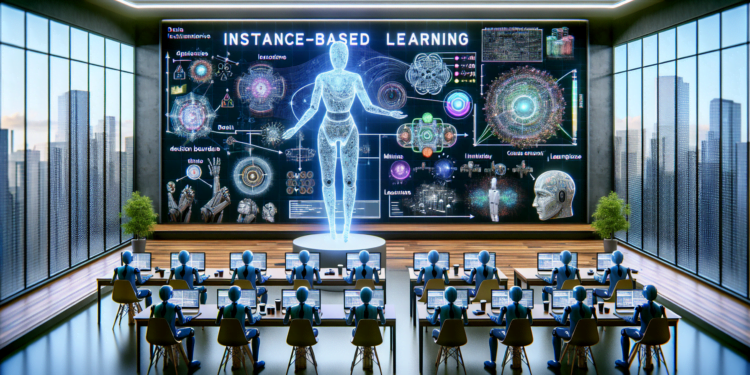In recent years, we have witnessed a silent revolution in the field of Artificial Intelligence (AI), particularly with regard to machine learning. Among the various methods for machines to learn from data, Instance-Based Learning (IBL) emerges with a proposal that challenges the classic notion of modeling and opens new paths for exploring large volumes of information. This specialized article aims to delve into the methodology, practical applications, and future directions of IBL in AI.
Fundamentals of Instance-Based Learning
IBL, also known by its English acronym as Instance-Based Learning (IBL), operates under a simple premise: instead of generalizing from data to create an explicit model, the algorithm stores instances and uses them to make predictions. This is realized through techniques such as the k-Nearest Neighbors (k-NN) algorithm, where the classification of a new instance is performed based on the proximity and category of the ‘k’ closest neighbors.
Distinctive Features of IBL:
- Visualization: Proximity is often determined using distance measures, such as Euclidean distance in an n-dimensional space.
- Nonparametric: They do not assume a prior distribution of the data, which makes them flexible in the face of different forms of data structures.
- Lazy learning: Unlike “eager” learning that generates a model prior to querying, IBL postpones work until a specific query is made.
Innovative Applications and Case Studies
IBL is especially useful in domains where predictive models require constant updating or where the relationships between variables are unknown or too complex to be efficiently modeled.
Examples of the utility of IBL include:
- Medical Diagnosis: Finds applications in treatment recommendation and diagnoses based on similar previous cases.
- Recommendation Systems: For products on e-commerce platforms, IBL allows for the recommendation of items based on the demonstrated preference of users with similar profiles.
- Fraud Detection: In the banking sector, where fraud schemes evolve rapidly, IBL is used to identify suspicious operations by comparing them with known transactions.
Recent Advances and Developments
In addition to classic approaches like k-NN, recent developments in IBL include improvements in attribute weighting schemes, more sophisticated distance measures, and a combination of IBL with dimensionality reduction techniques and deep learning. Methods are also being integrated to be robust against noise and the ability to handle large streams of data in real time.
Challenges in Optimization:
- Massive Storage: The need to store a large number of instances can result in considerable memory requirements.
- Query Speed: The time to find the nearest neighbors can be prohibitive as data volume grows.
- Dimensionality: The phenomenon of the “curse of dimensionality” can degrade performance as the number of attributes increases.
Future Perspectives and Potential Evolution
Having already established its ability to solve complex problems and adapt to new data with minimal effort, research in IBL is geared towards overcoming its limitations to allow for faster, more effective, and scalable analysis. The integration with other AI disciplines, such as neural networks and swarm-based optimization techniques, does nothing but forecast a bright and possibility-filled future for IBL.
Innovations on the Horizon:
- More Efficient Algorithms: Research into data structures like kd-trees and ball trees points toward significant improvements in the speed of neighborhood calculations.
- Combination with Deep Learning: The use of representations learned through neural networks could significantly improve the quality of proximity measures used.
- Dimensionality Reduction: Advanced techniques such as Principal Component Analysis (PCA) and t-SNE are being applied to mitigate the effects of the curse of dimensionality.
IBL holds a peculiar role in AI: it is a powerful methodology when it comes to certain types of data and problem contexts. With a focus on persisting and learning from concrete instances, the future of IBL will depend on how its inherent challenges are addressed and its inherent strengths in data processing and analysis in real-life scenarios are capitalized on.
Through exploring the limits of cognitive computing and the relentless advancement of technology, IBL could not only transform our analytical capabilities but also the way we conceive intelligence and automated learning. The scientific community, along with the technology industry, has the fascinating challenge of steering this constantly evolving vessel, taking IBL and AI in general towards new horizons of possibility.






















